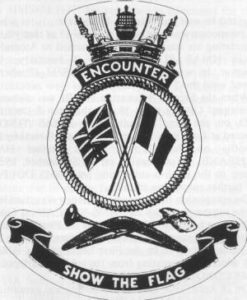- Author
- Sullivan, John
- Subjects
- History - general
- Tags
-
- RAN Ships
- HMAS Cerberus, HMAS Encounter I, HMAS Torrens (base)
- Publication
- June 1994 edition of the Naval Historical Review (all rights reserved)
On 12th April, 1915, the Commonwealth acquired land for the purposes of establishing a new naval depot in South Australia, to replace the existing depot at Largs Bay. The new depot was to be at Birkenhead, in the Municipality of Port Adelaide, and it had a number of advantages in that it was close to the port river and adjacent to ship repair facilities.
Between the two World Wars the Birkenhead Naval Depot gradually grew as additional land was acquired. An ongoing feature at the depot was Naval Reserve training.
When World War II began the depot was officially commissioned as HMAS “Cerberus IV” on 13th September, 1939. On 1st August, 1940 the depot was recommissioned as HMAS “Torrens”. On 12th August, 1941 two sailors from “Torrens” were killed detonating a mine on the shore at Beachport, between Robe and Mt. Gambier. It is believed these were the first naval personnel of WWII killed on Australian soil as a result of enemy action.

After the war, “Torrens” returned to its peacetime roles of providing a naval presence in South Australia, assisting visiting ships and reserve training. On 1st March, 1965 the depot underwent another name change and was recommissioned as HMAS “Encounter”. This name perpetuated the name of the former light cruiser, built for the Royal Navy in 1901-05. Her first commission was on the Australian station and when the RAN was formed “Encounter” became HMAS, being on loan from the RN. She was later formally handed over to the RAN. The name “Encounter” also commemorated the meeting between Matthew Flinders and Nicolas Baudin off the South Australian coast in April, 1802.
On 21st March, 1994 HMAS “Encounter” was decommissioned, which marked the end of over 100 years of a permanent naval presence in the Port Adelaide area. The ceremony, a very moving one, was attended by a large number of civilians, most of whom represented the various ex-naval groups with chapters, branches, etc., in South Australia. Commodore M.B. Forrest, RAN represented the Flag Officer, Naval Support Command.
The ceremony began with the Commanding Officer of HMAS “Encounter”, Commander Brian Gorringe, ADC, RAN, welcoming all those present. He then presented medals to three naval personnel, and also a number of cheques to various charitable organisations, being the means selected by the officers and ship’s company to dispose of surplus mess funds. Commodore Forrest then addressed the gathering.
A church service was then conducted by “Encounter’s” chaplains, G. Pitman, RANR and J. Powell, RANR. The RANR Band, which is to be retained in Adelaide, provided music for the hymns, and the bible reading – Romans 8, 18-30 – was read by LSMT P2SM S.V. Till. Chaplain Pitman then addressed the gathering and closed the service with the naval prayer, followed by the benediction.
Commander Gorringe then gave the CO’s “Farewell”, after which the White Ensign and the Commissioning Pennant were lowered. The White Ensign, which had been autographed by many of “Encounter’s” final ship’s company, was presented by the CO to Ms Dieuwke Jessop, Acting Director of the South Australian Maritime Museum. Commander Gorringe retained the Pennant.
The band then led the ship’s company from the grounds of the former HMAS “Encounter” out onto the adjacent roadway where they were halted and dismissed. The CO was at the rear of the march, in maintenance of the maritime tradition that the captain is the last to leave his ship.




